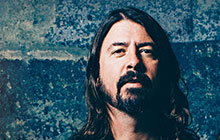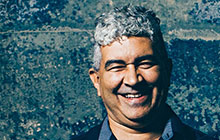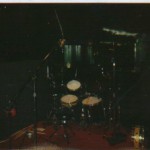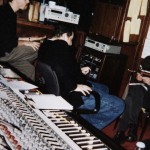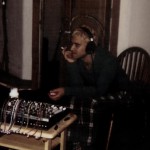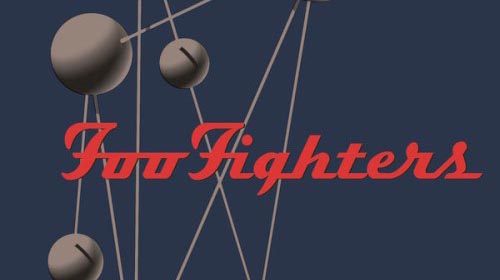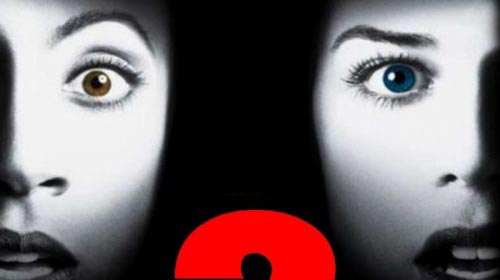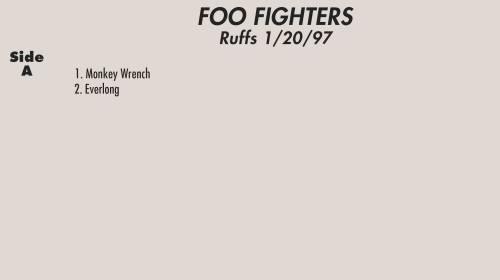Session Information
January 1997 saw Foo Fighters come back together to complete their troublesome recording for the second album. The band had spent approximately three weeks at Bear Creek Studios in Woodinville, but nobody was particularly happy with the results. Dave Grohl called the session “a bad experience”, feeling that the band had perhaps jumped into recording too soon on the back of extensive touring for the first record.
The reclusive studio location was also expensive and so it was decided a change of scenery was in order, to a smaller and cheaper setting. Unlike Bear Creek, their newly chosen location was far from secluded – Grandmaster Recorders was in the heart of Hollywood, just off Sunset Boulevard. It was selected on the recommendation of engineer Bradley Cook, who was at the time working there as an in-house engineer. A former silent movie theater, the studio had been used by artists such as David Bowie and Red Hot Chili Peppers. According to Nate Mendel, the studio had also “occasionally moonlighted as a porn set” and “looked the part.”
Initially, only Dave Grohl and producer Gil Norton were at the new location and Grohl wasted no time in playing the two new songs he’d written and recorded at WGNS Studios. “It wasn’t a surprise to me when Dave came back from Virginia with two good new songs,” recalled Norton. The producer was particularly impressed by the track ‘Everlong’, asserting that it “brought the whole album together.”
With the two new songs given the thumbs up by Norton the pair then turned their attention to the recordings from the Bear Creek session - in particular, William Goldsmith's drumming. Norton made it clear to Grohl he was unhappy with Goldsmith’s work and having heard Grohl playing drums on the two new songs, convinced him to carry out a ‘test’. That test was to re-record the drum track for the song ‘Monkey Wrench’ so the pair could compare his and Goldsmiths takes. According to Norton, the result was “ten times better” with Grohl behind the kit and soon the rest of the tracks came under scrutiny.
More work was deemed to be required across the board and so Nate Mendel and Pat Smear were both invited to join Grohl and Norton at the studio. Crucially, William Goldsmith was not. He remained at home in Seattle over 1,000 miles away, oblivious as to what was happening in Los Angeles. The expectation from Smear and Mendel was that they would merely be adding some final polish and finishing touches to the work they had started in Woodinville but soon became suspicious of what was really going on.
“Dave comes in, he's like, 'Listen, we're gonna redo 'My Poor Brain' or whatever the song is. Drum track's not quite right. Actually, I'm doing the drums on this one. We're just gonna redo it,” recalled Mendel. Smear had similar concerns, noticing that he kept getting asked to record guitar parts on songs he had already tracked and that more and more songs were being “done over”. Eventually, it dawned on the pair that the whole album was essentially being re-recorded, without William Goldsmith.
One of the songs the trio worked on was the newly written ‘Everlong’. Dave Grohl had tracked a rough demo version over the holiday break and with band members and producer alike enjoying the song, they got to work on recording a final version. The original demo was recorded only as an instrumental and in the meantime, Grohl had written some lyrics, although not alone; he had collaborated with Veruca Salt singer and guitarist Louise Post on the song she would later claim was about her. “Yes, Everlong was about me,” she wrote on the Veruca Salt message board in later years. Whilst Grohl would not go so far as to state the song was about Post, he did reveal that the song was about “A girl that I’d fallen in love with. It was basically about being connected to someone so much, that not only do you love them physically and spiritually, but when you sing along with them you harmonize perfectly.”
Post helped write the vocal harmonies during the chorus of the song, noting that the ‘Doo-Doo Doos’ were inspired by the Veruca Salt song ‘Shimmer Like A Girl’, from their 1996 EP ‘Blow It Out Your Ass It's Veruca Salt’. Not only did Post help with the writing process, but she was also invited by Grohl to record the vocal harmonies on the song itself. There was something of a distance problem however, with Post in Chicago, some 2,000 miles away. Unable to fly out to Los Angeles, Grohl came up with the rather unique idea to record her vocals over the telephone. At Post’s end she used her fax phone as a receiver to be able to hear the track and another phone as a microphone whilst at the studio engineer Cook simply pointed a microphone at the phone receiver.
The results were unsurprisingly lo-fi with Grohl using a vintage Astatic JT-40 microphone to give his harmonized vocal track some similar qualities. As well as recording the background harmonies the pair came up with the idea to record a conversation between themselves and include it in a quiet breakdown section of the song. Over the phone Post described to Dave a dream she had about the pair and whilst the recording method muffled much of what said, she could be heard mentioning ‘and I saw you, and I didn’t know how to get out’. She also recorded some additional very soft ‘do do do’ vocals which were overdubbed on top of it, further muffling the phone conversation. Despite Post’s heavy involvement in the song, she has never been officially credited in any capacity.
With still no sign of Goldsmith and concern growing from Mendel he felt it was only right that he called to explain the situation. A shocked Goldsmith wanted answers - “I was like, what's going on? Should I book a flight? I should be down there?” With Grohl now aware Goldsmith knew they were at a studio recording without him, he too called to try and explain. According to Goldsmith, he was told that Grohl was re-doing just “a couple of drum tracks” and had told him not to come to the studio.
Suspicious, Goldsmith arranged to meet with Mendel in person who revealed the truth. “What's going on, Dave's redoing a couple of the tracks?” asked Goldsmith. “Is that what he told you? He re-did them all” was Mendel's response.
By January 20th rough tracks were once again complete for most songs, now with Grohl on the drums. Happy with the results, cassettes were made containing rough mixes of what they believed to be two of the strongest songs, ‘Monkey Wrench’ and ‘Everlong’. The tapes were sent to management and their record label and everyone seemed happy with the songs - but there was one issue.
Several parties were not overly keen on the inclusion of Louise Post on ‘Everlong’, particularly the spoken word phone call section. Post herself noted that “[Grohl] was going through a divorce, and things were already difficult” and so it was decided the phone call would be replaced with Dave talking instead. Three tracks were recorded and blended together, the first of which was Dave retelling a story studio engineer Ryan Boesch had told everyone during recording. Boesch’s father worked a night job when he and his brother were young children and if they were ever too noisy during the day, waking their father, he would force them into military style punishments – such as holding construction boots over their head. In Grohl’s retelling of the story he can be heard mentioning how the children started crying because the boots were too heavy. The two other spoken word portions were of Dave reading a random textbook that was laying around in the studio, according to engineer Cook. Whilst the conversation with Grohl had been replaced Post’s backing vocals were left in the song, albeit low in the mix and blended heavily with Grohl’s own triple tracked voice.
With a few final tweaks and yet more re-recorded tracks recording at Grandmaster Recorders was completed by February 1997. The second Foo Fighters album was finally complete but as Grohl had unknowingly predicted before recording began at Bear Creek, the band were ‘falling apart’. Drummer William Goldsmith never played any part in recording at Grandmaster and soon received confirmation that almost all his work in Seattle had been re-recorded.
Despite this Grohl did still want Goldsmith to remain in the band and tour the record, but this wasn’t something the drummer could stomach. “As it is now, I have to rebuild my soul, or re-find it if you know what I mean. So, thanks, but no thanks” he told Grohl. Goldsmith officially quit the band in March 1997, announced to the press soon after.
Whilst Grohl had re-recorded much of Goldsmith’s work, some of it did remain on the final master tapes which meant a great deal of stitching was required to put the album together. The first song on the album, ‘Doll’, was not re-worked at all during this second session, entirely using the original Bear Creek recording.
The first intricate stitching work came with the song ‘My Poor Brain’. Rather than use either Goldsmith’s or Grohl’s drum track in their entirety, the decision was made to use the formers work on the verses of the song whilst the latter featured on the rest of the song. Next to be spliced was ‘Up In Arms’. The opening slower paced 55 seconds of the song was taken from the first session whilst the second, fast tempo section was a Grandmaster re-record with Grohl behind the kit.
A different approach was taken for the song ‘See You’. Rather than two different recordings of the song being book-ended together one part of the instrumentation (Bass and drums) came from the second session whilst an acoustic guitar track and Grohl’s vocals were taken from the first session. The tracks were all joined together to form one coherent song on the album. A simple mix of the song featuring only the vocals and acoustic guitar were released on the ‘Monkey Wrench’ CD single.
Most of the finished songs were used on the album, but some out-takes were left on the cutting room floor such as the song ‘Comfortable’, a mid-tempo love song which picked up the pace in the final third.
Also discarded was the first attempt at a song titled ‘7 Corners’. This would be the first of many attempts at recording a complete song around a riff that Dave really enjoyed but it was at this stage not deemed a success. The titular track ‘The Colour And The Shape’ was only recorded during the first session and was released in complete form as a B-Side. ‘Dear Lover’ was also used as a B-Side as well as being contributed to the soundtrack CD to the movie ‘Scream 2’.
Mixing was completed at Skip Saylor Recording, a studio situated less than two miles from Grandmaster Recorders. Owing to the tight deadline the band were operating under mixing actually took place concurrently with recording. As each song was completed at Grandmaster the master tape was driven the short distance to Skip Saylor for mixing to begin immediately. Chris Sheldon was the man in charge at Skip Saylor assisted by Jason Mauza and the duo would even return feedback to the band back at the studio if they felt something wasn’t working. On one such occasion Sheldon thought the final mix of ‘Monkey Wrench’ would sound better with a third guitar track and so trusting his expertise, the master tape was returned, another guitar track was recorded, and then it was back to Chris and Jason for final mixing.
Sheldon mixed on an SSL 4000 G series recording desk which he said had “lots of outboard EQs”. The drums and guitar were put through an old Neve sidecar desk with 16 channels and Teletronix LA-2As were used for the vocal compression, but Sheldon noted most of the big vocal sound on the record came from the fact Grohl triple-tracked his voice.
Recording of Foo Fighters second album had been extremely hard work, made several band members question their abilities and had ultimately cost them a drummer, but their hard work paid off and ‘The Colour And The Shape’ was released in May 1997 to strong critical reception.
